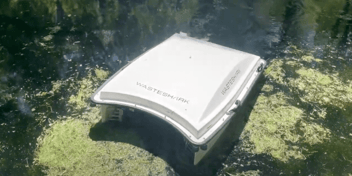Zero-emissions wastewater treatment becoming a reality
As parameters for pollution and water quality tighten, utilities must shift their thinking to take a more innovative and integrated approach to wastewater treatment.
“Operational efficiencies and being as good at our job as we can be have taken us this far, but we can’t continue this way; we need to do more,” said Queensland Urban Utilities (QUU) Treatment and Production General Manager Peter Donaghy.
"If we are purely a compliance activity, and working just to meet standards set by regulators and governments, what happens when it becomes no longer acceptable to put anything into the environment?”
In recent years, more attention has been paid to wastewater treatment to meet quality requirements, Donaghy said. This is good in one sense, but it also makes it an increasingly resource-intensive and power-hungry process.
“The challenge is that you can’t keep raising standards without there being an increase in the cost and power needed to meet those standards.”
There are huge opportunities for wastewater treatment plants to lead the charge when it comes to sustainable development, said Donaghy. He will be presenting on this zero-emissions future of wastewater treatment at the upcoming Ozwater’17 conference.
To achieve what he called “an integrated approach” to reaching zero emissions, treatment plants are looking for solutions closer to home by collaborating with local communities.
“There are already moves to turn wastewater treatment plants from a compliance facility to a production facility,” Donaghy said. By this, he means viewing effluent as a commodity that can be mined for every usable molecule, particle and substance. These products are then used by local communities, businesses and the utility itself.
According to Donaghy, this isn’t wishful thinking either. For example, at one of QUU’s wastewater treatment plants, 45% of power requirements are met with biosolids and methane gas produced when sewage goes through the plant’s digesters.
Donaghy said they are also partnering with local agriculture to make use of land not suited for growing food crops.
“Most wastewater treatment plants will treat the water and send it away – sometimes to great distances. To offset this, we have undertaken a trial to take biosolids to irrigate and fertilise crops that produce biodiesel on land that wouldn’t otherwise be used for food production. This way, it becomes part of the local community and becomes an enabler of local industry.”
Engaging with the community and local businesses leads to innovations and opportunities for utilities to establish new lines of business, he said.
“We already have lots of customers who use recycled water, so it becomes more about collaborating with them to arrive at a bespoke arrangement around the particular needs of the local community.
“For example, if we were to get into the business of producing biofuel, that could either be used by local residents or businesses, or it can be used to run our fleet of vehicles. Suddenly, you’ve created a new industry that helps diversify the local economy and contributes to a more sustainable environment.”
Donaghy described the facility of the future as one that "produces more power than it consumes, doesn’t discharge water into local waterways, and doesn’t consider biosolids as waste but as a valuable commodity”.
“Wastewater treatment plants can truly become a manufacturing business that supports people and enriches the quality of life for people – whether that’s in rural or urban areas.”
To learn more about the zero-emissions future of wastewater treatment, register for Ozwater’17 by clicking here.

